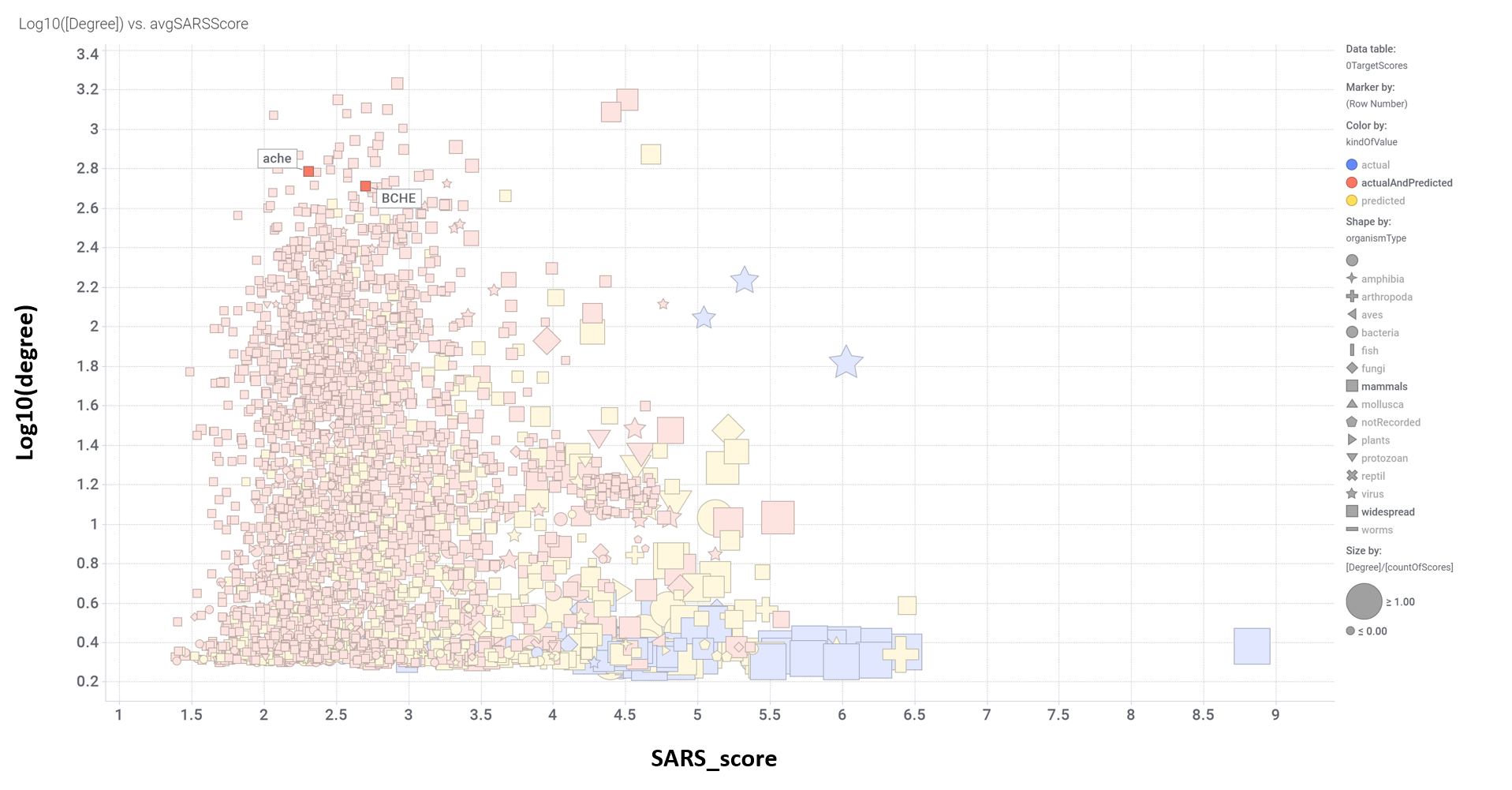Cholinesterases interactions with actual or predicted SARS active compounds.
Predicted activities have been aggregated at the protein level into different scores attending to their potency, frequency of protein-molecule interactions, and specificity based on positive records vs total number of active records. Network graphs show all ChEMBL interactions of predicted active molecules. Barcharts and scatter plots show the aggregated potency against SARS-CoV (SARS_Score) vs the number of distinct molecular interactions for each protein (expressed as logged degree). Most interesting proteins attending to any of these values have been flagged in the scatter plots. Additional details as described in respective captions.
And how are these cholinesterases ranked by their combination of scores.
Scatter plot flagging best ranked cholinesterases.
.

Aggregated SARS scores at the protein level: Log10(degree): logged number of interactions for each protein. SARS_Score: Aggregated score against coronavirus infection per protein. Size by Degree/CountOfScores represents the number of SARS actiove interactions vs total records per protein in ChEMBL. Color by condition of elements involved in score aggregation; they can be built from actual, predicted values or a combination of both. Shape indicates the organism type as described in the legend.
Are cholinesterases an artifact or a non described/reported/suspected mechanism?
- No clear references have been found in literature linking cholinesterases to antiviral effects.
- Canonical cholinesterase inhibitors (DONEPEZIL, ECHOTHIOPHATE, GALANTAMINE, ISOFLUROPHATE, MINAPRINE, NEOSTIGMINE, PYRIDOSTIGMINE, RIVASTIGMINE, TACRINE) have not been identified as active against coronavirus, neither in actual nor predicted records.
- The selectivity index (Degree/CountOfScores representing the number of SARS active interactions vs total records per protein in ChEMBL) is very low, suggesting an artefactual finding caused by over representation of cholinesetrase molecules.
- However, if we look at the selectivity of these interactions, although we find quite high pleiotropy among the drugs interacting with cholinesterases, most of molregnos seem to be uniquely associated to cholinesterase activity. See interactions graph below.



